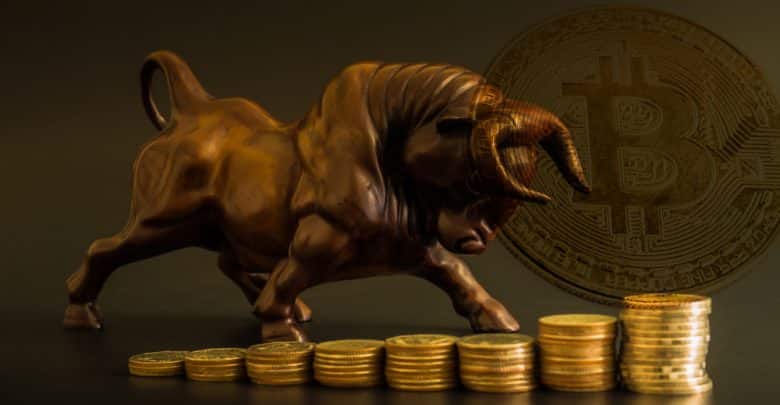Bull Trap In Crypto Trading – What Causes It And How Does It Work?

A bull trap is a situation in which a security’s price reverses course suddenly and experiences a brief period of increased value. These short-term price spikes can often be the result of false signals, or overreactions to true news. This trap generally catches traders who blindly followed the buy signal and ended up losing money on their long positions. Bull traps generally occur when the market becomes uncertain about a certain asset, and wrong information starts to circulate.
These traps can be dangerous for investors, as they can mistakenly buy an asset when its true value is still relatively low. Such a trap deceives some traders into believing that the market or the price of an individual stock has gone down enough and that now is the best time to buy an asset. However, when it becomes clear that the market is not currently a good time to invest, buyers already find themselves trapped in a downward spiral of money losses.
Bull traps are common when investors buy stocks that surge past resistance levels, indicating that the market is seeing strong buying interest. The name “bull trap” is derived from the idea that traders unaware of the asset’s actual condition are tricked into believing it is in better condition than it really is. There’s a danger of being overconfident and falling victim to a bull trap, which leads to significant losses.
The short-term buying frenzy usually ends soon, and the price may fall shortly thereafter. The trap is named after those who invested when there was a price breakout and saw their investments skyrocket, only to have the price decline and leave them with losses. After briefly increasing in price, the market promptly reverses and begins to trend downward again, falling even more than it was before the bull trap started.
Those who fall victim to the trap of thinking the price will only continue to go up get themselves a losing investment. This can lead to a loss of money and may even damage their financial security. Bull traps can occur in any market, but they’re particularly common when an uptrend is near its end or when a market is beginning to decline.
When the price of the asset repeatedly oscillates, it may eventually break out of the range established in the past. This indicates that there is strong demand for the asset and that it is likely to continue rising in price. If there isn’t enough demand to keep driving the price up, the price can slide back into the original range and lock those who just bought in a losing market. Similarly, when an uptrend is about to end, the same thing can occur. As fewer buyers are available, the price may briefly exceed a previous peak, but subsequently falls sharply as more sellers enter the market.
How do bull traps work and why do they occur?
Many reasons can lead to bull traps, but it can often be difficult to pinpoint one specific cause. One reason could be that bull traps occur when investors see particular stock prices fall and mistakenly conclude that the stock is about to go down even further. This can cause them to buy the stock, even though it may not be a good investment.
Investors often clamor to buy stocks or investment products at low prices, believing that these items will soon increase in value. However, during periods of steep decline, prices may actually decrease further, making these investments even less lucrative. These investors tend to decide that it’s the perfect time to buy stocks because they believe they are buying those stocks at a discounted value.
Investors’ increased demand for shares and short sellers’ decision to buy back their own shares lead to driving up the stock’s price again. As the share price continues to rise, other investors may start to feel the need to get in on the action, which helps to drive up the value even further. When the stock price rises past a particular point, investors who have held shares during a recession may decide that they want to get rid of the shares while they still have a chance.
This causes more shares to be available for purchase than people are asking for, which causes the market to go down again. Eventually, the price falls below the range and becomes a bear market. This means that the price has decreased significantly, and there is a high chance that it will continue to decrease. Despite the downtrend appearing to be gaining traction, the bulls eventually come back and push back the price to its previous peak. Prices may temporarily spike above certain levels, but it could lead to even more buying.
Many traders see this reversal as a bullish sign and begin purchasing, believing that the downtrend is over. Unfortunately, the price tends to drop quickly after a bubble and can lead to large losses for those who made purchases at the peak.
Individual investors who trade securities individually or make trades quite often should be especially watchful for bullish traps, which are stock market traps that can make investors lose money. These investors may purchase shares at a low price, only to realize that the value of the shares continues to decrease. It can be difficult to identify a bull trap, especially when the trend of security’s price is moving in the opposite direction.
Some examples of bull traps
Consider that a stock ABC is currently valued at $100, representing a healthy return on investment. However, despite ABC’s strong performance in the past, its performance begins to decline, and it falls to $70 within a few months. After declining to a price of $70, XYZ starts to appreciate again and goes up to $80. During this timeframe, investors start buying stocks, expecting ABC to rebound to its previous peaks.
To their surprise, ABC stock falls again, this time hitting $50. This bullish trap happened when ABC hit $70 and started to rise, deceiving investors who thought it will continue to appreciate value by buying the stock, only to find in the end that its value dropped again.
Investors may have been caught in a false market bubble when the S&P 500 retreated from record-breaking highs in January 2022. In January 2022, SPX was trading at 4,800, a level that was lower than it had been at any point earlier in the years. This was a significant downturn from its previous level, and it signaled a potential for further decline. The market had a lot of volatility at the beginning of this year, but it eventually recovered and went up from around 4,100 to around 4,650 over the course of a month.
Amid the escalating inflation fears and economic tensions, bullish buyers took about a 20% hit downwards to reach bearish territory as of June 2022. However, volatility is still expected to increase in the near future.
Ways to identify a bull trap
Bull traps may look different, but they do share some technical features that are common to all. Here are some indicators that one may be in a bull trap.
- Poor trading volume
When the market is going strong, there is usually an increase in trading volume as more and more people will buy the security as the stock price rises. If the stock price doesn’t increase significantly following a breakout, or the security is not being actively traded then there’s a good chance that the rally won’t last in the long run. A price increase without an accompanying increase in demand may also be because of bots and traders trying to get ahead and maneuvering for advantage.
- Relative strength index
If the RSI is high, it can be considered an indication that the market is about to go into a bull trap. Using a relative strength index (RSI) can help identify a potential bull trap bubble. The relative strength index is a technical indicator that can be used to determine whether a stock market or an asset is overvalued, undervalued, or in equilibrium.
The calculation can be used for a variety of time frames, though it typically can cover a 14 days period. There is no impact on the calculation due to the period. In the event of a possible bull trap, an increased RSI and an indication that the stock is overvalued would signal increased selling pressure. Traders who will be anticipating a profit will most likely exit the trade at any time. Based on this, it’s possible that the first upswing in prices is likely not an indication of continued growth.
- Lack of momentum
Whenever a stock goes through a sudden and sharp decline, followed by a gentle rebound, it often indicates a bull trap. The market goes through ebbs and flows, following natural patterns. When a cycle reaches the top, it is a time of consolidation since the bulls and bears start fighting for control. There appears to be a lack of momentum in the market, which could be a sign that a reversal is coming soon.
- The level of resistance
Bull traps are often preceded by a sustained period of strong bullish momentum, followed quickly by a resistance level. Whenever a stock is exhibiting strong upward momentum and few signs of selling pressure, this indicates that there are a lot of buyers interested in the stock.
When prices reach a certain resistance level, traders become unwilling or scared to push the price any higher. This usually leads to a reversal in prices, before moving higher again.
- Lack of clear trend direction
Price trends typically follow a downward trajectory, dropping between two lower points to indicate the decline. It’s not always the case that when stock prices go up, there are corresponding advances in trading. Unless the price rises above the latest lower high, the downtrend remains in effect.
Lack of assurance is one of the most common mistakes often made by people that are involved in bull traps. It is reasonable to assume that if the current high does not exceed the previous one, then the market is behaving in a downtrend. Unless there’s a good reason, most people consider this to be one of the worst times to make a purchase. Even though it would be disappointing for most of the traders, some would rather wait for confirmation and buy at a higher price than try to get in on the action early and get trapped.
- Unusually bullish candle-pattern
This is a sign that the market is beginning to trend in the bulls’ favor, and they may soon take the market into their control. It could be due to various reasons why this might occur.
There are some players out there who are deliberately driving the price up in order to attract buyers. This is likely done in an attempt to lure in more investors, who may not be fully aware of the true value of the asset.
Many new investors continue to invest in the stock, believing that a breakout has happened already. This influx of capital causes the price to surge once again.
Sellers purposely allow the buyers to take control of the market for a very short period of time, resulting in the sell order limit being accepted above the resistance level.
How does psychology play a role in bull traps?
Bull traps are common in the stock market, and they can happen for a variety of reasons. One of the most important factors is how investors and traders think. Psychology is a critical factor in the case of bull traps. Many buyers get eager to trade at the first indication of an increase in prices. This could make such traders more prone to getting caught in a trap as there is little sign of any actual sustained move higher.
Many of these investors buy stocks because the price is moving higher above the level of resistance, but they are mostly doing so because they hope that the breakout will actually happen. Psychology can also play a role in buyers realizing that there are no potential buyers available. The price of a stock falls as more traders buy it, until they panic and sell, pushing the price even lower.
Price action is simply the result of people’s actions of buying and selling stocks. Buyers push prices higher, and sellers push prices lower. Some of these activities are based on sound methods, data from research studies, and practical experience, others are based on intuition and personal judgment. The price action can be the result of people buying and selling based on emotions such as materialism, fear of missing out (FOMO), and tension.
These practices may not cause harm during bull markets, but when a bear market comes back they can lead to serious problems. As the market moves higher, many investors become fixated on chasing the leading stocks, which can quickly lead to bad investment decisions. Investors may be making quick decisions about buying or selling stocks, and a sudden price increase can catch everyone’s attention.
Chasers get lured into thinking that strong moves are always going to continue, but they may be caught off guard during bear markets. This is not always the case, though, and it’s important to be prepared for when the market takes a downturn. Those who are accustomed to trading in a bull market can become caught up in the hype and rush of the market and end up in the trap of overpaying for stocks and underpaying for stocks, as their mindset becomes unidirectional.
Bull markets can be great for making money, but they don’t necessarily teach you how to become better at trading. Investors and traders should be able to develop a mindset that is both oriented towards taking advantage of markets in the bull market and being able to understand how markets may react in bear markets.
Conclusion
Bull traps can often happen when a market appears to be exhausted, indicating that there may still be more upside potential. The lesson to be learned from the bull trap is that it is important to wait for clear indications of an upcoming uptrend before investing. Many people who try to buy stocks in the market may not be successful because there is not much demand for stocks at that particular moment. When a trade seems to turn out to be a losing proposition, some traders can make emotionally charged decisions that can drive up prices quickly.
Therefore, investors should watch out for potential bull traps when the price drives past a certain level of resistance or the high point within a downtrend. If you are concerned about falling into a bull trap, place a stop loss on your position so that it can be sold before the price of the asset drops too much. By recognizing warning signs and exiting the trade quickly, you’ll avoid getting trapped in a bull trap. Ultimately, it may be wiser to focus on long-term investments or to diversify one’s portfolio.
Tokenhell produces content exposure for over 5,000 crypto companies and you can be one of them too! Contact at info@tokenhell.com if you have any questions. Cryptocurrencies are highly volatile, conduct your own research before making any investment decisions. Some of the posts on this website are guest posts or paid posts that are not written by Tokenhell authors (namely Crypto Cable , Sponsored Articles and Press Release content) and the views expressed in these types of posts do not reflect the views of this website. Tokenhell is not responsible for the content, accuracy, quality, advertising, products or any other content or banners (ad space) posted on the site. Read full terms and conditions / disclaimer.







